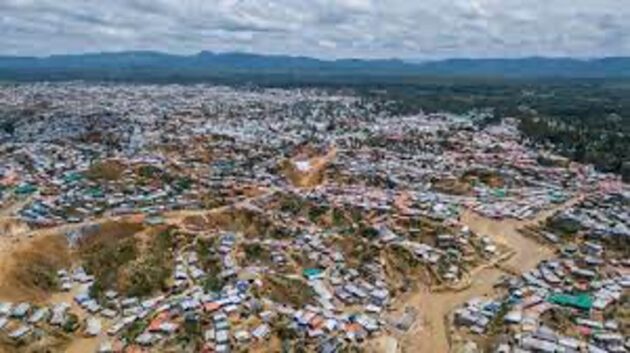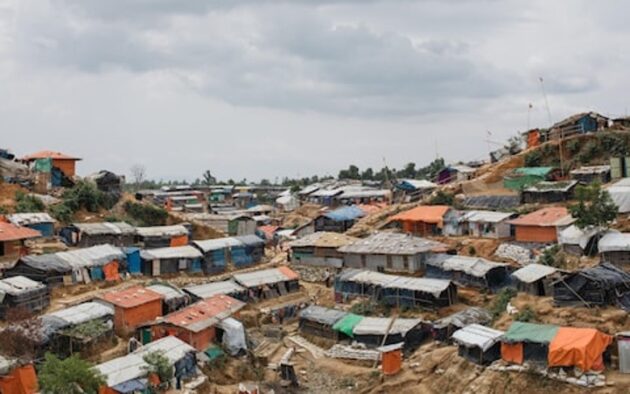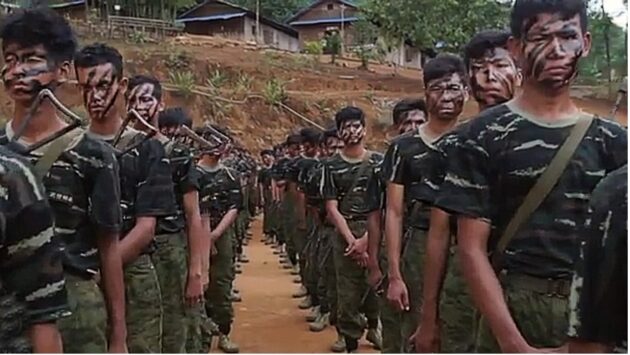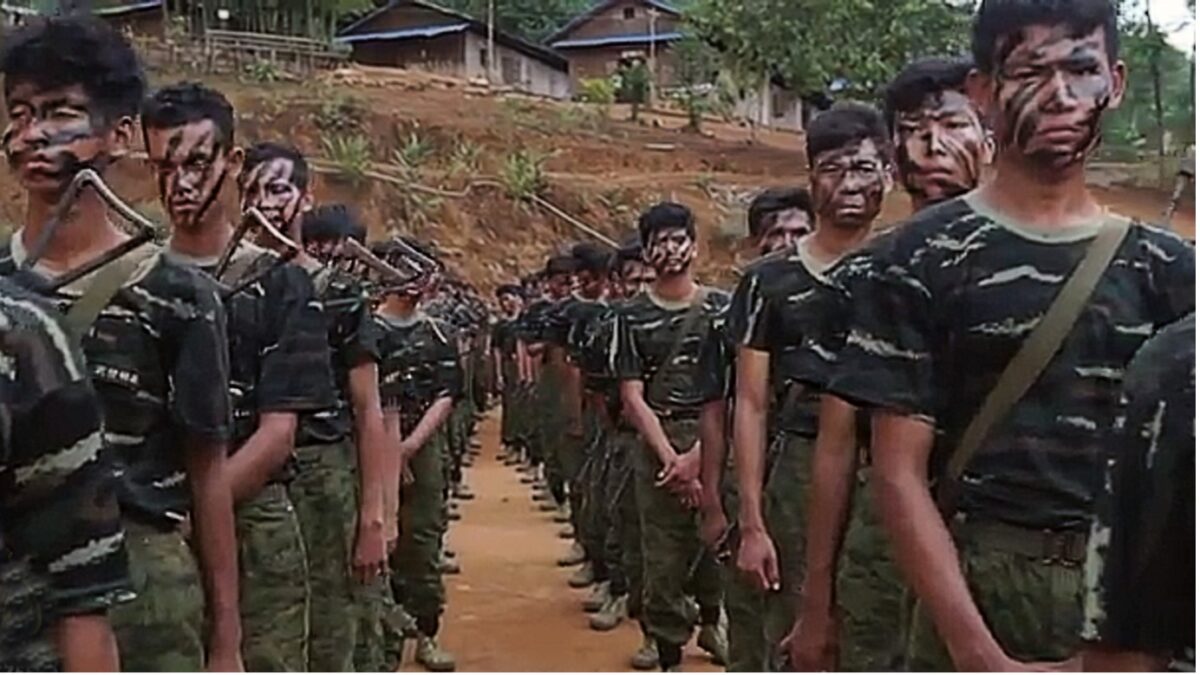15th July 2021
Nothing that follows in the article below is to be taken as an endorsement of what happened to the Rohingya during their expulsion from Myanmar which was of course unforgivable and horrific. I have always thought that the West didn’t understand the situation and their reactions were playing to their own domestic audiences. In effect, they pulled the rug from under Daw Aung San Suu Kyi. Indirectly, that weakened her power base and gave the military confidence to launch the coup 3 years later.
The military view is that they went in hard to Rakhine province as a matter of national security, and there was a major issue to be fixed. Well, they certainly fixed it. I was in Bangladesh from 2011 to 2014, visited Chittagong and Cox’s Bazaar, and knew of the rise of Islamic radicalisation during that time. Many of the recruits were going down to Cox’s Bazaar and the Chittagong hills and infiltrating into Rakhine State.
In May 2018, human rights organization Amnesty International brought to light a seemingly under-reported massacre of scores of Hindus and other ethnic minorities allegedly by armed Rohingya militants in Myanmar’s Rakhine state.
Amnesty published an investigative report based on interviews conducted in Myanmar and neighbouring Bangladesh, as well as photographic evidence analysed by forensic pathologists. The report said that Arakan Rohingya Salvation Army (ARSA) fighters “sowed fear among Hindus and other ethnic communities with these brutal attacks”.
ARSA allegedly killed 99 Hindu women, men, and children, as well as abducting many other villagers, in August 2017, something the western media seemed to have glossed over.
“Our latest investigation on the ground sheds much-needed light on the largely under-reported human rights abuses by ARSA during northern Rakhine State’s unspeakably dark recent history,” Tirana Hassan, Crisis Response Director at Amnesty International, was quoted as saying in the report posted on the organization’s website.
Over the past 18 months, there has been a renewed focus on ARSA, a designated terrorist organization in Myanmar, with some media reports suggesting it has links with Pakistan’s spy agency Inter-Services Intelligence (ISI) and militant outfits such as the Tehrik-e-Taliban Pakistan.
That possibility can’t be ruled out, people with knowledge of the matter told this writer.
ARSA and the Rohingya crisis
ARSA, also called Harakah al-Yaqin, allegedly launched coordinated attacks on Myanmar’s security forces in August 2017, following which, the Myanmar military led a crackdown that pushed more than 740,000 Rohingya Muslims into neighbouring Bangladesh. The international community criticized the Myanmar government and western media called out State Counsellor and Nobel Peace Prize Laureate Daw Aung San Suu Kyi, saying she had “excused a genocide”.
Amid all this, ARSA managed to keep a low-profile but reports suggest that the outfit had been receiving support from transnational jihadists, as well as the ISI. In February last year, the German news agency DW came out with a sensational report claiming that ARSA had started radicalizing Rohingya refugees in the camps in Cox’s Bazar in Bangladesh.


Prior to that, in October 2019, Bangladesh had denied Myanmar’s accusation that ARSA was preventing Rohingya refugees from returning home.
“The government of Bangladesh reaffirms to Myanmar that there are no ARSA activities in Rohingya camps,” the Bangladesh Foreign Ministry said in a statement.
Nevertheless, many details about ARSA and its activities kept cropping up in the media, some of which were corroborated by analysts as well. One credible piece of information is that ARSA leader Ata Ullah Abu Ammar Junjuni, alias Hafiz Tohar and alias Ata Ullah, was born in Karachi, Pakistan and that his parents had migrated to Rakhine state. Ata Ullah then went to Saudi Arabia and worked as a cleric there.

The Brussels-based International Crisis Group (ICG) published a detailed report on the Rohingya insurgency in Myanmar. It said ARSA is run by a committee of Rohingya immigrants living in Saudi Arabia and “is commanded on the ground by Rohingya with international training and experience in modern guerrilla war tactics”.
A Pakistani military portal, defence.pk, made an interesting observation on ARSA, “Although so far nobody is saying that ARSA has any religious motivation in its struggle, but Islamist outfits like the Islamic State and al-Qaeda look out for such enraged Muslim groups to raise their army of extremists. It is now anybody’s guess whether ARSA will be drawn into such a cauldron in future.”
Did ARSA infiltrate refugee camps?
In September 2019, India’s federal government told the country’s Supreme Court that many Rohingya refugees staying in the country had links with dreaded terror outfit Islamic State and the Pakistani ISI.
The Narendra Modi government’s reply came in response to a petition filed by two Rohingya refugees challenging any possible move by New Delhi to deport an estimated 40,000 people who had fled alleged persecution in Myanmar.
There are 16,000 registered Rohingya in India, according to the United Nations, but the number of undocumented people is believed to total around 24,000.
Guwahati-based senior journalist and insurgency expert Rajeev Bhattacharyya said, “Recent reports suggest an increase in the activities of criminal gangs and militant outfits. It is known that the camp at Shamlapur in Cox’s Bazar has a presence of ARSA functionaries. The possibility of ARSA’s links with ISI cannot be ruled out.”
Last year, Indian intelligence agencies reportedly tipped off the Border Security Force that the ISI allegedly arranged arms training for 40 Rohingya people in Cox’s Bazar. There were also reports about the Bangladeshi terrorist outfit, the Jamaat-ul Mujahideen of Bangladesh (JMB), providing training to Rohingya militants, although Dhaka has denied that.
The ICG also highlighted the ARSA’s links with JMB.
“The Bangladesh government is supposed to be on high alert in Cox’s Bazar where refugee camps have been erected. There have been occasions when some NGOs have been barred from entering the camps and there’s an ongoing crackdown on drug trafficking as well,” added Rajeev Bhattacharyya, who has visited the Rohingya refugee camps in Bangladesh’s Cox’ Bazar.
Source The Irrawaddy 15th July 2021.
A Saudi diplomat was killed in Gulshan, Dhaka in 2012 and his murderer was hanged in 2019. It was put down as a robbery gone wrong, but local gossip suggested otherwise. In 2016, 20 foreigners were killed at the Holey Artisan Bakery in Gulshan, Dhaka in a shoot-out between security forces and a large group. In the later trial, they were revealed as being members of the Islamic State group (ISIS). I was in Dhaka in 2018 and Gulshan (the upmarket and diplomatic zone) was under high alert with heavily armed troops and armoured vehicles everywhere. The threat is still there as ISIS is continuing to infiltrate Bangladesh and then down to Myanmar. Because of more interesting situations elsewhere in the world, this is creeping in under the radar.
This is continuing to this day. As stated, this in no way excuses the excessively brutal (and often fatal) treatment of the Rohingyas, but it is worth understanding what is going on as it gives an avenue into the mindset of the generals ruling Myanmar. They regard the protest movement as a major security issue that must be dealt with accordingly.
Please share this article so that others can discover The BFD

